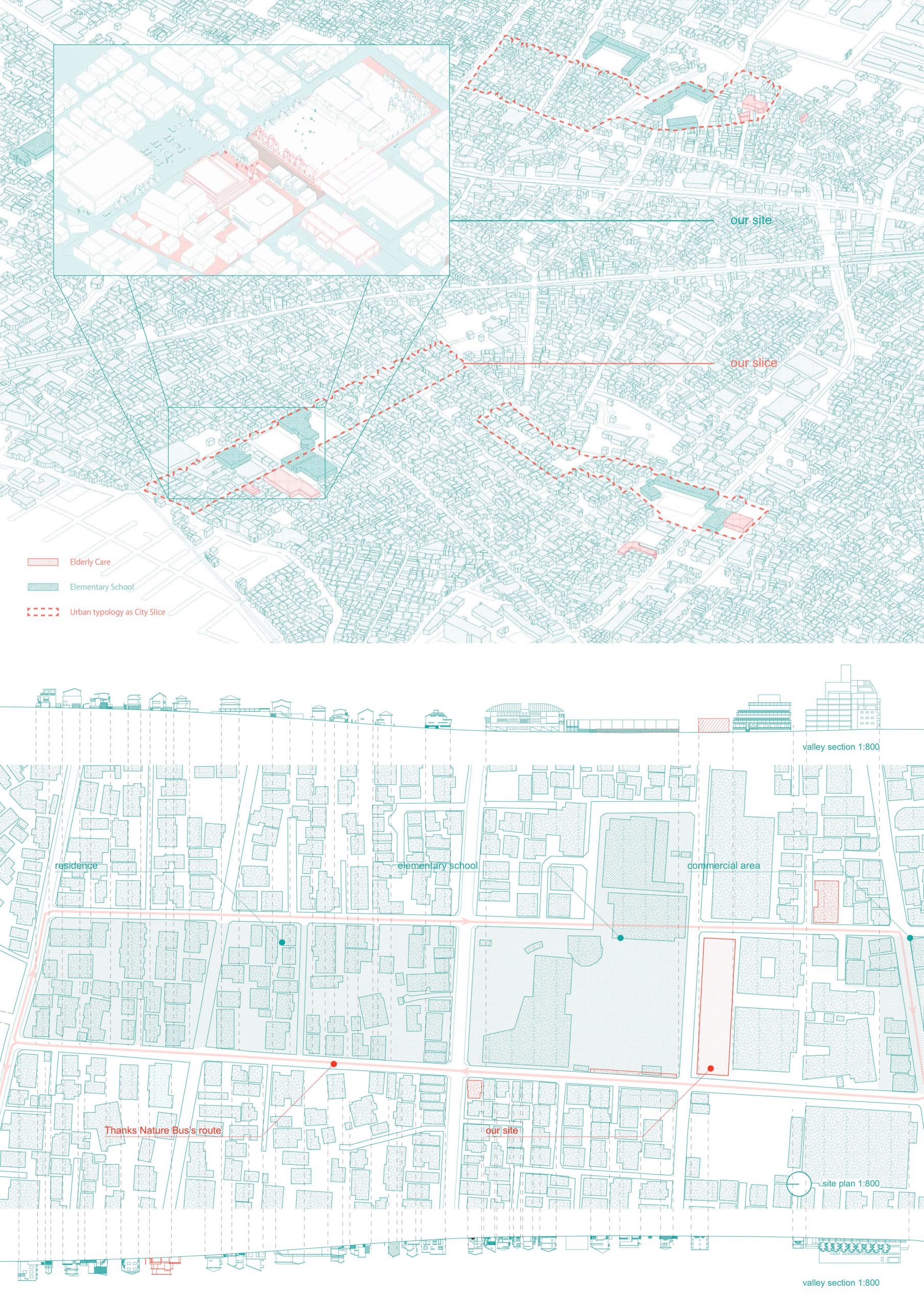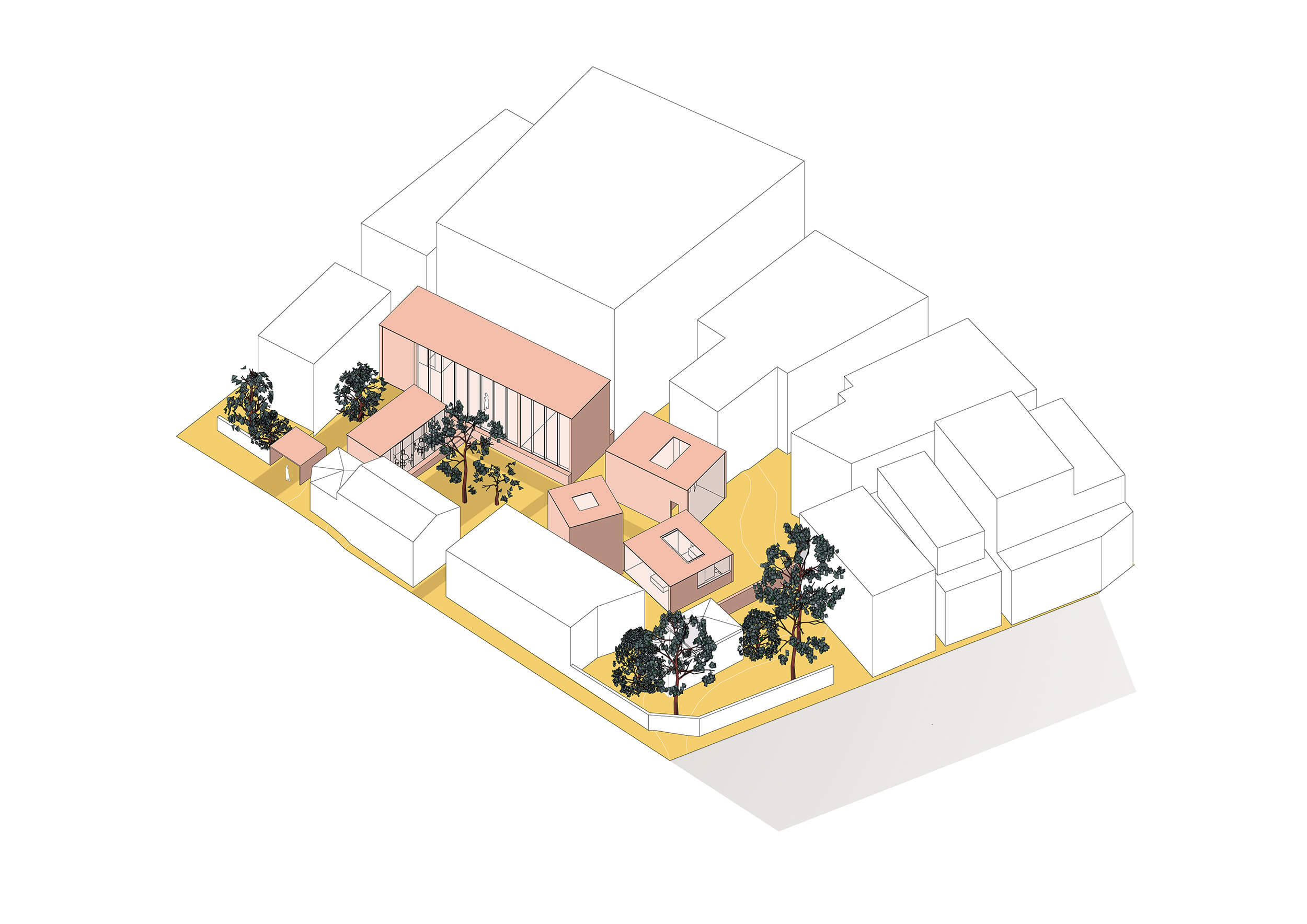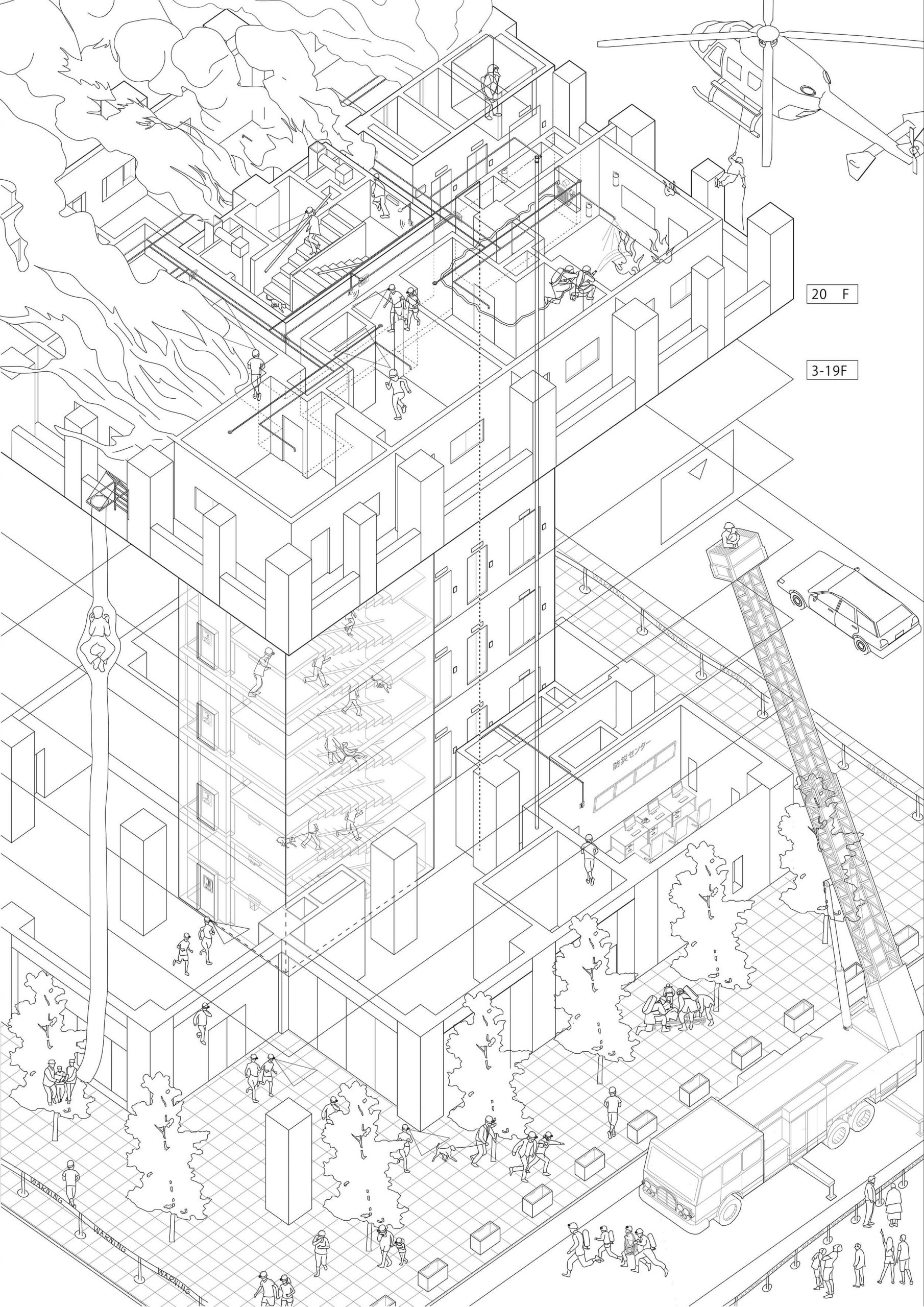In Jiyugaoka, a residential area is located at the top of the hill, and an elderly care facility and a school are located next to each other at the bottom. However, there is no interaction between these two facilities, and the elderly care facility is closed. Therefore, in order to allow children to enter the facility, a section of the building was manipulated and three plazas were created in plan. In this way, interaction between the elderly, school children, and local residents is created, and the elderly, who used to only receive care, are now actively involved.
Student: Eduard Hauska
Sleeping With Art
THE NIGHT SPENT WITH ART
The project is a proposal for an art complex containing an exhibition hall, a visiting artist residence, a café, a sculpture park and three art accomodation units. The site is a parking lot located in a busy area of Jiyugaoka, fac- ing one of the main shopping streets. The part facing the main road is occupied by an old tra- ditional wooden japanese house accompanied by big old trees which are `hiding` the inner part of the site where accomodations are lo- cated and create a quiet lagoon in the middle of this busy district.
The main concept of the proposal is to high- light the cultural history of Jiyugaoka and al- low visitors to experience art from a different perspective, that is to say the opportunity to spend the night together with art.
The artist residence connected to the exhibi- tion hall provides a special experience where the artist can be seen working at the time of ongoing exhibition.
During the day, the accomodations are open to the public as part of the sculpture park. During the night the units, designed to have their own private `gardens` transforms from
exhibition units to accomodating ones.
This transformation was one of the main focus points during the design process of the pro- posal.
The location of the site, disposition of the units on site in a sequence gradually opening up and the fact of unexpected usage of these units re- flects the head theme of unpredictability.
Staircase
From the Meiji Period to today the techniques of firefighting have shifted from the protection of a district, with large main streets or fire-resistant storehouses providing firebreaks, to en-masse fire-protected buildings, ensuring people’s ability to escape a conflagration. In the post-war period, with the densification of Tokyo, the vertical concrete staircases in multistory buildings—which themselves served as firebreaks along the main streets—became the major escape route, complemented by various types of devices that can be used from balconies or windows. In contemporary high-rises the common circulation system has become host to an entire emergency system, with smoke and gas detectors, alarms connected to ground-floor emergency centers, sprinklers, fireproof staircases, special emergency fire-fighter elevators, and even rooftop helicopter landing-pads.
Bath
Taking a bath in Japan is a not a strictly private affair. Nevertheless, the rituals of undressing, cleaning, and relaxing are carefully orchestrated and clearly separated from other extraneous activities. The conventions of who can enter the room are as similarly well-regulated as the behavior of the user. This makes any disturbance, departure from, or violation of these well-settled rituals all the more dramatic, be it the private noise of the neighbors in multifamily housing or, in the most extreme case, the sudden intrusion of a murderer into the bathroom—transgressions that throw the vulnerability of the bather and the violence of the intruder into all the sharper relief.


